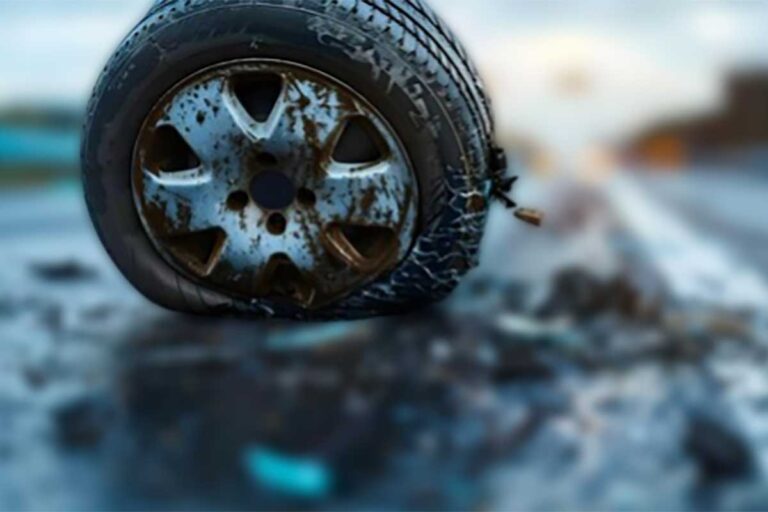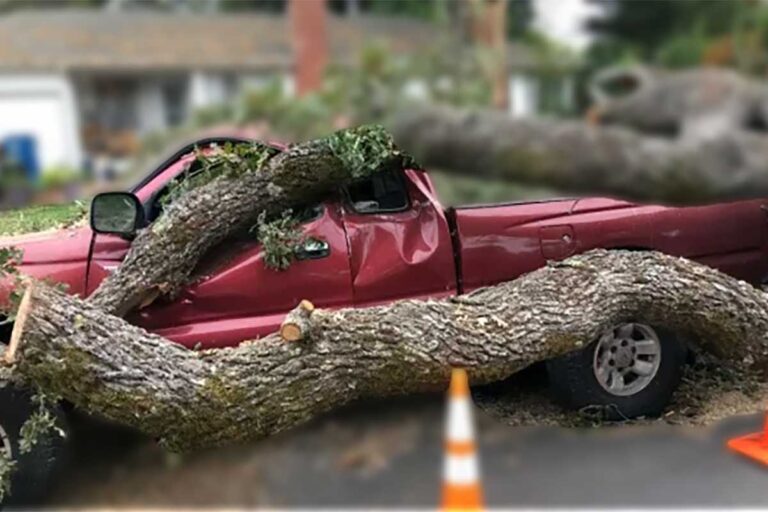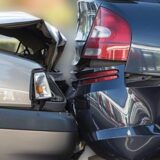10 Causes of Car Accidents Beyond Driver Error
Car crashes are an unfortunate aspect of driving in Georgia. Although speeding and driving under the influence are often highlighted as primary causes, examining more closely uncovers a variety of additional reasons. In the realm of automotive safety, it is a common misconception that the majority of car accidents stem solely from driver behavior. Several external causes can lead to car crashes completely independent of driver mistakes. While distracted driving and other forms of negligence are common, mechanical issues—including brake failures, tire blowouts, and steering complications—represent major non-human factors contributing to automobile collisions in Georgia and across the United States.
Beyond distractions caused by drivers, several other critical factors contribute to the elevated incidence of road accidents in Georgia. Conditions such as adverse weather, mechanical failures in vehicles, and inadequacies in road infrastructure also play significant roles. Understanding these factors not only broadens our perspective on road safety but also emphasizes the importance of vehicle maintenance and environmental conditions. At The Jewkes Law Firm, we have witnessed the significant effects that car accidents can have on both victims and their families. We invite you to join us in examining the primary causes of car crashes in Georgia not related to driver error.

GEORGIA PERSONAL INJURY LAWYER NEAR ME

1. Vehicle Defects
Mechanical failures, such as brake or tire issues, can lead to devastating accidents. Regular vehicle maintenance is crucial in mitigating these risks.
Deficiencies in vehicle components can have severe implications while driving. One significant concern is brake failure, which hinders a driver’s ability to halt their vehicle effectively, thereby heightening the risk of accidents. This issue may arise from various factors such as degraded brake pads, fluid leaks, or faulty components. Similarly, tire blowouts pose substantial dangers, often caused by improper inflation levels, debris on the roadway, or general wear and tear.
A report from the NHTSA indicated that tire-related incidents accounted for more than 622 deaths in 2021 alone. Conducting regular tire maintenance—such as inspecting tread depth and ensuring correct air pressure—can greatly diminish the chances of experiencing a blowout.
To ensure safety on the road, vehicle owners should adhere to recommended maintenance schedules and routinely examine both brakes and tires for signs of deterioration. Additionally, staying informed about automotive recalls is crucial for preventing mechanical failures while driving. Ultimately, diligent vehicle maintenance and vigilance regarding potential defects are key factors in ensuring safety on the roads.
Injured In A Car Wreck? Contact Us For A Free Consultation
Injured In A Car Wreck?
2. Weather Conditions
Adverse weather, including rain and fog, can create treacherous driving conditions. Drivers must adjust their speed and driving behavior accordingly.
Adverse weather conditions like rain, snow, fog, and ice greatly reduce visibility and grip on roadways. These conditions can make vehicle handling more challenging and hinder effective emergency response efforts. When roads are wet, the distance required for stopping increases markedly, and there’s a heightened risk of hydroplaning, which can result in loss of control and skidding.
Approximately 21% of all traffic accidents in the United States are caused by weather conditions, according to the Federal Highway Administration. This statistic highlights the critical importance of exercising heightened caution while driving in inclement weather. Key preventive measures include reducing speed, maintaining greater following distances, and utilizing headlights properly.
Moreover, many states—Georgia included—have traffic regulations such as O.C.G.A. § 40-6-180 that mandate drivers to adjust their speed according to prevailing conditions. Drivers who do not comply with this requirement may face penalties for driving too fast for the existing conditions, irrespective of the posted speed limit.
3. Road Conditions
Poorly maintained roads, potholes, and construction zones increase the likelihood of accidents. Reporting road hazards can prompt necessary repairs and improvements.
A report from the American Automobile Association (AAA) indicates that inadequate road conditions and infrastructure contribute approximately $3 billion annually in costs related to vehicle repairs, medical bills, lost income, and other damages incurred by American motorists.
Potholes pose a serious threat to vehicles and can lead to loss of control for drivers. Areas undergoing construction often result in unpredictable traffic patterns and unforeseen obstacles. Additionally, insufficient signage may create confusion, resulting in non-compliance with traffic regulations such as speed limits and right-of-way rules.
The obligation to maintain roadways rests primarily with local and state governments. When these entities neglect their responsibilities leading to accidents, it can result in potential legal consequences. Therefore, drivers are encouraged to stay alert and report problematic road conditions in regions known for such issues, allowing local authorities to resolve them promptly.

4. Animal Crossings
Wildlife collisions pose a significant risk, particularly in rural areas. Drivers should remain vigilant and cautious in regions known for animal activity.
Wild animals, including deer, often cross highways and country roads, particularly during dusk when visibility is reduced. Such interactions with these creatures can result in:
- Significant damage to vehicles
- Injuries to individuals
- Loss of life
According to the Federal Highway Administration, there are approximately 1 to 2 million incidents annually involving collisions between vehicles and large wildlife. This concerning statistic underscores the importance of driver awareness and the necessity for precautions in regions with high animal activity.
Drivers can effectively minimize risks related to animal crossings by implementing several strategies: decreasing their speed, meticulously scanning the road sides, using high beams at night, and ensuring seat belts are securely fastened. Additionally, it is crucial for drivers to be mindful of wildlife crossing signs and exercise heightened caution in these designated areas.

5. Street Racing
Illegal street racing dramatically raises the risk of accidents. Law enforcement is actively working to combat this dangerous behavior.
Street racing, while thrilling, carries significant risks that often culminate in loss of control, accidents, and serious legal repercussions. The combination of high speeds and aggressive driving impairs the ability to respond swiftly to changes in traffic or unexpected obstacles, frequently leading to devastating incidents.
To address this perilous behavior, law enforcement agencies across the country have introduced various strategies. These include enhanced surveillance methods, increased police presence in known racing hotspots, and substantial fines for offenders.
For example, in Georgia, the state’s racing statutes (O.C.G.A. §40-6-186) classify violators as guilty of misdemeanor offenses. Penalties may include fines, suspension of driving privileges, and possibly imprisonment.
Need a Free Consultation? Need a Skilled Attorney?
Free Consultation
Call (770) 771-5130
If you’ve been injured, you need to hire the best legal care to assist you with your claim. Get a FREE consultation today!
6. Natural Disasters
Natural events can suddenly change road conditions, creating hazards for drivers. Being informed about potential disasters and having emergency plans can aid in safety.
Natural disasters such as landslides and earthquakes can have a profound impact on road infrastructure, leading to significant disruptions and potentially life-threatening situations. Various factors, such as intense rainfall, seismic activity, volcanic eruptions, or human activities altering the landscape, can trigger landslides.
Earthquakes present a particular hazard for motorists since they can dramatically alter road conditions in an instant. This transformation can result in cracks that engulf vehicles or cause extensive damage to the roadway, rendering it unusable. The United States Geological Survey (USGS) indicates that earthquakes can also lead to secondary hazards like tsunamis, landslides, or avalanches, which further increase the level of risk.
It is crucial for areas prone to these natural calamities to implement early warning systems and for drivers to remain vigilant about the latest road conditions. Civil engineers and architects strive to design and upgrade bridges, tunnels, and roads so that they are better equipped to endure such disasters, thereby reducing the likelihood of structural failure.
On an individual level, drivers should keep an emergency supply kit in their vehicles, familiarize themselves with evacuation routes, and understand what actions to take if they find themselves driving during a natural disaster. Additionally, it is advisable for drivers to avoid travel during extreme weather events whenever possible and to comply with any evacuation directives issued by local authorities.
Injured In A Car Wreck? Contact Us For A Free Consultation
Injured In A Car Wreck?
7. Poor Road Layout/Design
Inadequate road designs can confuse drivers and increase accident risks. Ongoing assessments and improvements are necessary to enhance roadway safety. Suboptimal road design can result in:
- Driver disorientation
- Traffic bottlenecks
- Increased risk of collisions
Factors such as sharp bends lacking proper signage, perplexing intersections, and insufficient merge lanes can create hazardous conditions for drivers.
The Federal Highway Administration (FHWA) has established standards and guidelines to enhance road safety; however, many roads do not adhere to these criteria. Traffic accidents are more common on roads that lack clear lane markings or have sudden shifts in traffic patterns without proper notification.
8. Insufficient Traffic Signals or Signage
Missing or unclear signage can lead to confusion and violations. Regular maintenance and updates are essential to ensure clear communication for drivers.
Effective signage is crucial for steering drivers through intricate road systems, providing essential information such as speed limits and roadway conditions. When traffic signals or clear signs are lacking, drivers face challenges in making timely decisions, which can lead to an increase in traffic violations and accidents.
The Manual on Uniform Traffic Control Devices (MUTCD), issued by the Federal Highway Administration, outlines the guidelines for the installation and upkeep of traffic control devices across all public streets, highways, bikeways, and privately managed roads available for public use.
Maintaining compliance with these standards involves ongoing efforts that include regular inspections and swift actions in response to community reports about faded, defaced, or absent signage.

9. Unexpected Incidents
Unforeseen events like falling rocks or tree collapses can pose serious threats. Staying alert and aware of surroundings is critical for all drivers.
Such occurrences frequently take place unexpectedly, particularly in areas characterized by natural cliffs or dense forests. Factors such as natural erosion, substantial rainfall, or seismic events can trigger rockfalls. Tree failures can result from decay, severe weather conditions, or disturbances caused by nearby construction activities.
To reduce these risks, transportation authorities often implement a range of preventive strategies, including the installation of rockfall protective barriers and nets, along with comprehensive tree management programs. For instance, in Georgia, the Department of Transportation (GDOT) routinely carries out tree trimming operations along state highways and actively identifies and addresses trees that present potential hazards.
Nevertheless, it is essential for motorists to remain vigilant, adhere to safe driving speeds, and heed any posted warnings. While traversing regions vulnerable to these types of incidents, drivers should be ready for possible road blockages and develop contingency plans—such as familiarizing themselves with alternative routes—to avoid delays or dangers.
10. Car Manufacturing Defects
Defects in vehicle manufacturing can lead to significant safety hazards. Staying informed about recalls and addressing issues promptly can prevent accidents.
Despite advancements in safety technology, defects in automobile manufacturing continue to present risks on the road. These defects can range from minor comfort-related issues to critical failures that may result in accidents. Particularly hazardous problems include malfunctioning airbags, brake failures, and steering complications.
To address significant post-sale concerns, manufacturers implement automotive recalls. In the United States, the National Highway Traffic Safety Administration (NHTSA) is responsible for overseeing and enforcing vehicle recalls when safety standards are not met. Manufacturers are obligated to repair, replace, or refund vehicles affected by such defects at no cost to the consumer.
It is essential for consumers to remain alert and informed about potential recalls that might impact their vehicles. Prompt attention to recall notifications is crucial since these defects can jeopardize not only the driver but also passengers and other road users. Vehicle owners can utilize the NHTSA’s recall portal, which provides a user-friendly database for checking if their car has any unresolved recall issues.
Injured In A Car Wreck? Contact Us For A Free Consultation
Injured In A Car Wreck?
Promote Safe Driving
The leading causes of car accidents in Georgia illustrate a complex interplay of human behavior and environmental factors. While distracted driving, speeding, and impaired operation are significant contributors, external influences such as weather and road conditions also play crucial roles. By promoting awareness and implementing safety measures, drivers can contribute to a safer driving environment for everyone on the road.
As we have explored, mechanical failures, weather conditions, road infrastructure issues, and vehicle design flaws can cause car crashes without human error. By understanding these external causes of car crashes, we can better appreciate the complexities surrounding road safety and the importance of regular vehicle maintenance, vigilant driving practices, and advocacy for improved road conditions. Recognizing that not all car accidents are the result of driver negligence is crucial in fostering a comprehensive approach to reducing roadway incidents and enhancing public safety.
Common Causes of Car Accidents: A Statistical Overview
Gaining a comprehensive understanding of the frequent causes behind car accidents can shed light on both human behavior and mechanical issues that impact road safety. By examining relevant statistics, we can uncover trends that may guide initiatives aimed at enhancing traffic safety.
Here are some noteworthy statistics that underscore the frequency and consequences of various factors contributing to car accidents:
- The National Safety Council (NSC) reported that approximately 46,000 fatalities occurred due to car crashes in the United States in 2020. This figure represents a 22% increase in the death rate from traffic-related incidents compared to 2019, prior to the pandemic.
- According to the Federal Highway Administration, more than half of all traffic collisions happen at or near intersections. Major factors leading to these incidents include insufficient monitoring and misconceptions about other drivers’ actions.
- Distracted driving remains a significant concern. The Centers for Disease Control and Prevention (CDC) indicates that around nine individuals die daily in the U.S. from crashes involving distracted drivers.
- Weather conditions play a crucial role as well, with roughly 1,235,000 weather-related vehicle crashes occurring annually in the United States, according to the U.S. Department of Transportation.
- Additionally, defective vehicle parts contribute notably to accidents, accounting for approximately 2% of total incidents. In 2019 alone, the National Highway Traffic Safety Administration (NHTSA) managed 966 safety recalls affecting over 53 million vehicles across the country.

GEORGIA PERSONAL INJURY LAWYER NEAR ME
Contact a Car Accident Attorney in South Atlanta
At The Jewkes Law Firm, we understand the profound impact that car accidents can have on individuals and their families. If you have been injured in an accident caused by a distracted, impaired, or negligent driver, our experienced car accident attorneys are here to help. We bring the necessary expertise, resources, and determination to fight for your rights and secure the compensation you deserve. Reach out to The Jewkes Firm, LLC today at (770) 771-5130 for the assistance you need.





